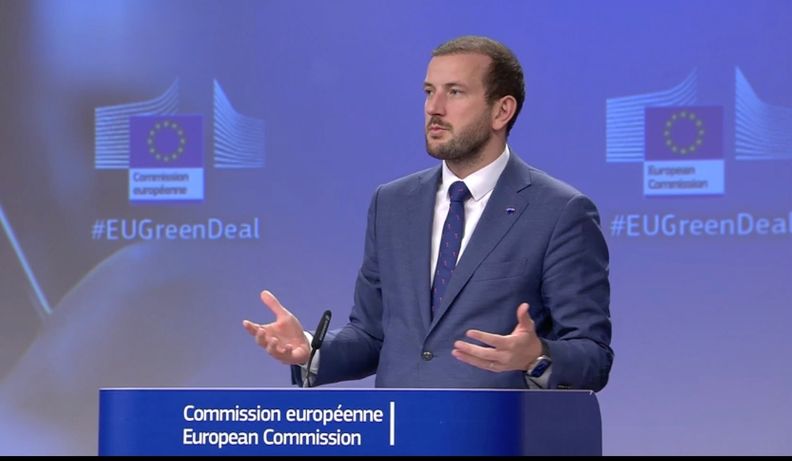
The long-awaited proposal for the revised European regulation on packaging and packaging waste was published Nov. 30.
As expected, the proposed new rules comprise a thorough overhaul of the existing regulation and are first and foremost aimed at calling a halt to the mounting problem of plastic packaging waste.
The Commission noted that packaging is one of the main users of virgin materials, with 40 percent of plastics and 50 percent of paper used in the European Union destined for packaging. If no action is taken, the EU is on course to see a further 46 percent increase in plastic packaging waste by 2030.
The new package, presented by Executive Vice-President Frans Timmermans and Commissioner Virginijus Sinkevičius, aims to reverse the trend. To that end, a three-pronged strategy has been laid out:
- First, great emphasis is placed on waste prevention: reducing the amount of packaging, restricting unnecessary packaging and promoting reusable and refillable packaging solutions.
- Second, high-quality, closed-loop recycling must be scaled up, something the Commission will achieve by requiring all packaging on the EU market to be recyclable in an economically viable way by 2030.
- Finally, the use of primary natural resources must be reduced and a well-functioning market for secondary raw materials created, through the implementation of mandatory recycled content targets for plastic packaging.
According to the Commission, new doors will open for the industry in terms of business opportunities, especially for smaller companies, while the consumption of virgin materials will drop. More European recycling capacity will make Europe less dependent on primary resources and external suppliers.
For consumers, the proposed revisions will bring more reusable packaging options; eliminate unnecessary packaging and limit overpackaging; and provide clear labels to support correct recycling. Companies will be required to use reusable or refillable package for a certain percentage of their products — for example takeaway drinks and meals or e-commerce deliveries. Packaging formats will to some extent be standardized and reusable packaging clearly labeled as such.
The proposal will clear up confusion on which packaging belongs to which recycling bin, as each piece of packaging will carry a label showing what the packaging is made of and in which waste stream it should go. Importantly, the waste collection containers will carry the same labels — and the same symbols will be used throughout the EU.
Single-use packaging for food and beverages consumed inside restaurants and cafes will be banned, as will single-use packaging for fruits and vegetables, miniature shampoo, toiletries and other miniature packaging in hotels.
Other measures include setting design criteria for packaging; creating mandatory deposit return systems for plastic bottles and aluminum cans; and clearly marking compostable packaging so that consumers can dispose of it appropriately.
Under the proposed new rules, however, the use of compostable packaging is mandated only when its use "brings a clear benefit for the environment or for human health," such as when compostable packaging helps with the collection or disposal of bio-waste.
This latter proposal was received with a mixture of disappointment and relief by the Berlin-based European Bioplastics association. Relief, because an initially proposed partial ban on compostable plastic packaging was eventually lifted and compostable packaging solutions will continue to be allowed to be marketed and recycled in the EU, according to Hasso von Pogrell, managing director of EUBP.
By making several packaging applications mandatory to be compostable in industrial composting facilities, including tea bags, filter coffee pods and pads, fruit stickers, and very lightweight plastic carrier bags, the Commission is taking a first step in the right direction, in the view of EUBP.
On the other hand, the disappointment stemmed from the Commission's proposal failing to promote biobased content the way it promotes recycled content: through targets to help secure feedstock availability, to achieve recycled content targets, and to meet the strict requirements for contact-sensitive materials.






